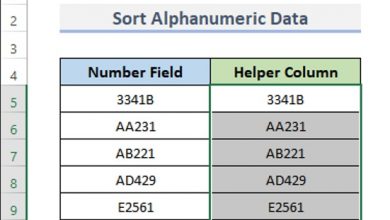Quantitative variable examples/Characteristics/15 examples
What are qualitative variables?
Research helps professionals from different disciplines to improve their understanding of the dimensions of reality with which they deal. Thanks to research, it is possible to assess whether or not a drug or treatment is effective, or that it is more effective than another, and it even allows the creation of highly relevant technologies and scientific advances. Quantitative variable examples
But to investigate it is necessary to take into account that there are many elements that affect what we want to analyze . There are countless variables to take into account. And the study of these and their interaction is fundamental for the scientific explanation of reality.
Within the different variables, we can find two large groups depending on the way in which we can treat them. Some of them allow us to measure aspects of reality and observe mathematical relationships between their values: quantitative variables. Others allow us to see that there is a quality or not that we are observing, but they do not allow its measurement (especially when we talk about abstract elements): it is about qualitative variables .
Characteristics of this scientific concept
A qualitative variable is understood to be all that type of characteristic or category that serves to classify a plot of reality in several non-numerical values that allow assessing the presence of differences or fluctuations with respect to said characteristic between the different subjects to be analyzed.
The qualitative variable is one that focuses on the quality, condition or characteristic and classifies reality based on categories that cannot be quantified numerically (unlike the quantitative ones that allow the values of these variables to be assessed).
In other words, qualitative variables are those whose values are not measurable with measuring instruments and which do not present a measurable quantity by themselves . Thus, wherever we find examples of qualitative variables, we will mainly find indications about whether or not the subjects studied have a quality that cannot be accumulated from less to more using values with the same numerical distance from each other.
These variables can be both nominal (they only serve to differentiate subjects into different categories) and ordinal (which, in addition to the above, allow an order to be established, although it does not allow to observe mathematical relationships between their values). They can also be dichotomous (when there are only two possible values) or polynomial (when the variable can have more than two possible values).
15 examples of qualitative variables
Below you will find a series of examples of typical qualitative variables, although it must be taken into account that it is often possible to make a variable of this type operable and quantitative.
1. Sex
Probably the most common qualitative variable in scientific research, at least when we analyze aspects related to behavior and human health. This variable has two values in its most traditional conception, or three if we take into account the existence of intersex people. It is necessary to bear in mind that we are talking about sex on a biological level, not about sexual or gender identity .
Thus, we could find the values man, woman and intersex, which establish a categorization of the subjects in such a way that the category itself only establishes that the subject is part of one or another group, being a nominal qualitative: being a thing or another does not allow to establish a hierarchy or order or to perform mathematical operations or transformations with its values.
2. Gender / sexual identity
In addition to biological sex, sexual or gender identity is also a nominal qualitative variable. People can be cisgender or transgender, for example, expressing this category only a characteristic of their person which is not directly quantifiable .
3. Sexual orientation
Another nominal qualitative variable can be sexual orientation: the category in question establishes a distinctive element without there being any type of order or numerical relationship. Heterosexual, homosexual, bisexual, asexual, pansexual… there are a lot of possible categories .
4. Marital status
Like sex, marital status is another qualitative variable of a nominal type, whose values establish a quality or property in which different people can be differentiated but without there being any numerical relationship between their values. It is only established whether or not the subject has a partner . Single, married / common-law partner or widower are some of the most common and well-known values, as well as separated or divorced. Quantitative variable examples
5. Ethnicity / Race
Another example of a qualitative variable that appears more in social sciences is that of ethnicity or race, in this case it is also a nominal variable . And it is that being, for example, Caucasian or African American (among others) allows us to distinguish different ethnic groups, but without there being an order or numerical relationship between these factors.
6. Religious confession
The religious confession of a person can be considered a type of qualitative variable: it only establishes a quality of a person.
Being an atheist, agnostic, Christian, Muslim, Jewish, Hindu , Buddhist or member of another of the many existing religious confessions is something that can differentiate the beliefs and way of being of people, but without there being any type of ordination or numerical relationship between them. Quantitative variable examples
7. Profession
Our profession or trade is also a nominal qualitative variable. Being a psychologist, doctor, architect, bricklayer, plumber or priest simply allows us to categorize ourselves within a collective , but it does not allow us to order people or establish numerical relationships between different professions.
8. Schooling
This time we are dealing with a type of ordinal qualitative variable: there is a progression between the different levels and it allows comparisons to be made by using ordered categories , even if they do not have numerical values per se.
Thus, we can see people without studies, with primary studies, secondary studies and higher studies. One is not more valuable than the other, but someone with secondary studies must have done primary studies before, for example.
9. Socioeconomic status
Like schooling, it is an ordinal qualitative variable: having a high socioeconomic level implies a higher degree of this variable than someone with a low level, although a numerical relationship cannot be established.
10. Position
Although we have mentioned that the profession is a nominal qualitative variable, the position we occupy within said profession can be considered ordinal (although it is still qualitative): a hierarchical order can be established between the different positions, for example from private to general or from kitchen boy to chef. Quantitative variable examples
11. Color
Green, blue, red, white … Color is another example of a nominal qualitative variable , given that it only indicates a quality of the object that differentiates it from others. We cannot establish any kind of numerical relationship between their values. Now, it must be taken into account that this variable could become quantitative if instead of color we measure wavelength (in which there are operable numerical values.
12. Blood group
Another nominal qualitative variable can be blood group. Having group A, B, AB or O in its positive or negative levels does not allow us to order or establish numerical relationships (who has A + blood does not have twice that of B +, for example).
13. Brand
The brand of the products we use is another possible qualitative variable of a nominal type, which can be used, for example, in market studies . Quantitative variable examples
And it is that the brand itself can only offer us information that said value of the variable is presented or not. Now, it must be borne in mind that if we go on to analyze the number or frequency of use of said brand, we will already be using a quantitative variable.
14. Mood
By itself, the state of mind (from which we could extract different variables such as happiness, sadness, etc.) is a qualitative variable.
Another thing is that by means of specialized instruments a representative measurement of the state of mind can be made when this phenomenon becomes operational (for example, we can use tests such as the BDI to measure levels of depression); but by itself the fact of being sad, happy or euthymic offers values of a variable that does not allow numerical relationships to be established between them.
15. Name (and surname)
We probably do not usually think of them as a variable, but the truth is that our name and surname can be considered and treated as nominal qualitative variables.
Jaime is not Pablo, but it is not possible to establish an order or visualize any numerical relationship with these values (given that if, for example, we decided to count the number of Jaimes and Pablos, the variable would already become Number of Jaimes / Pablos and this already it would be quantitative). Quantitative variable examples
The same goes for surnames. They serve us to group the members of the same family, but they do not serve to order them nor can numerical relationships be established with this variable per se.


